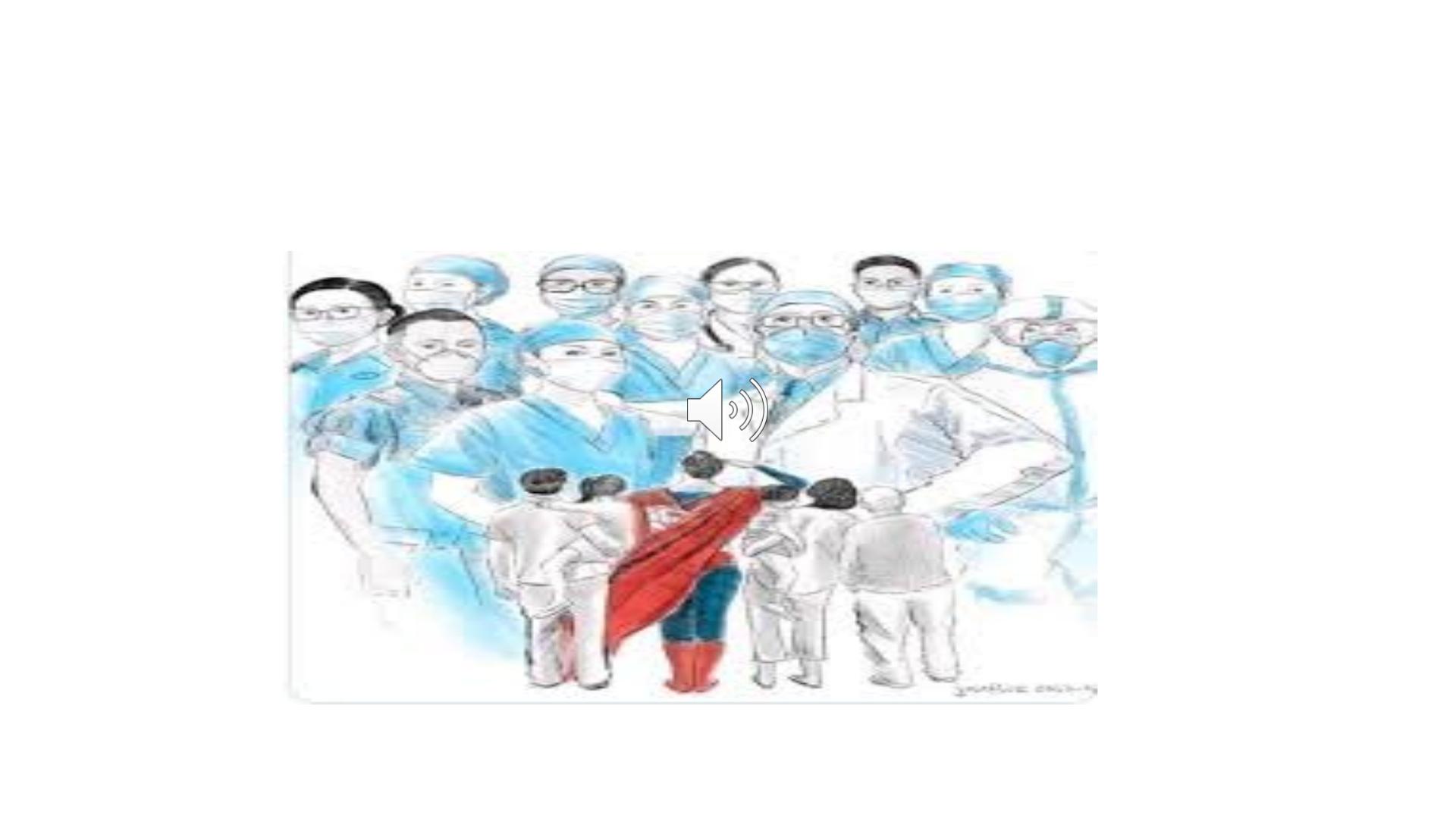
ENT lecture 1 Nose
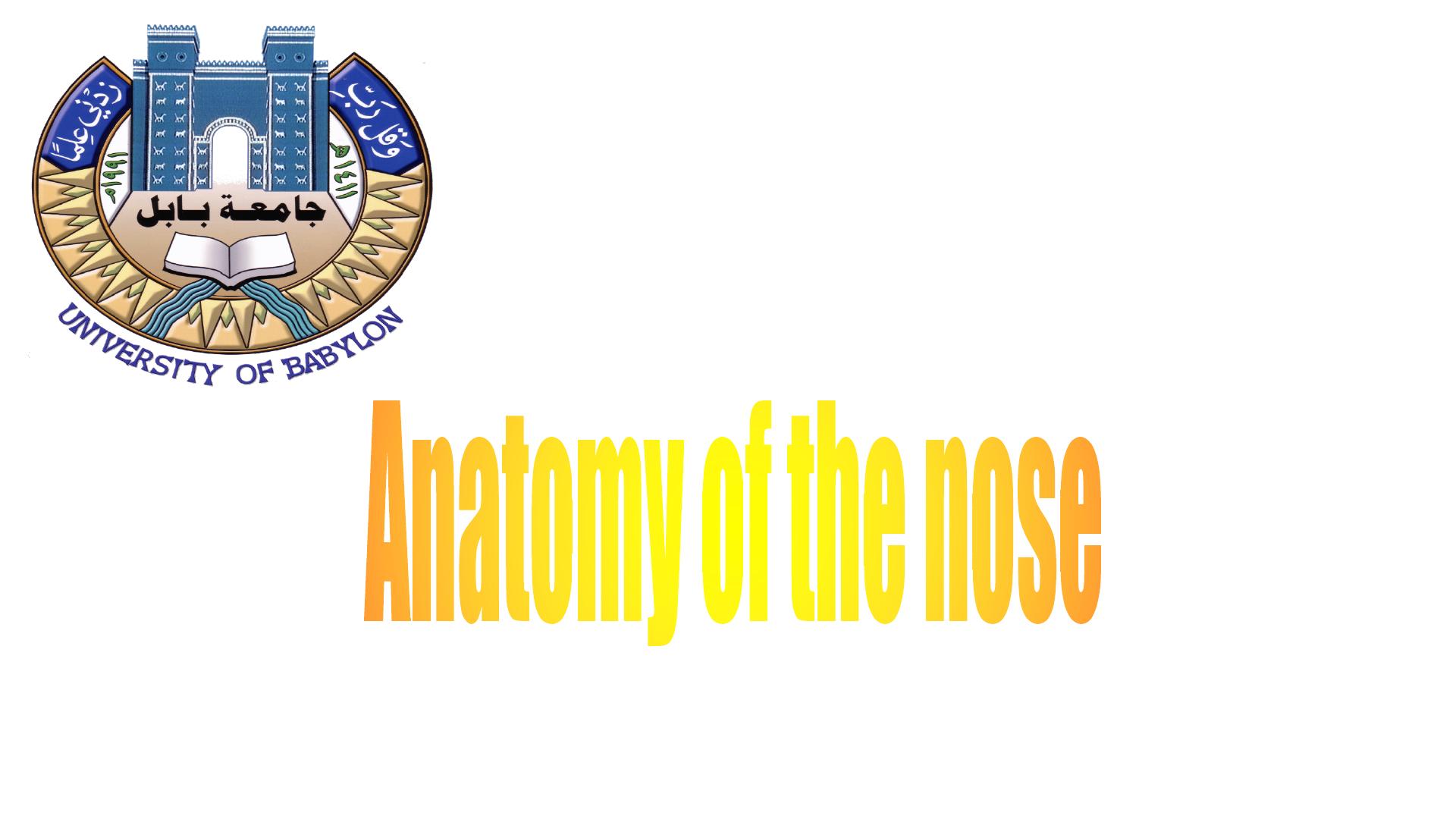
Dr.Safaa Hussain Alturaihy

External nose
It is a pyramidal in shape upper boney pyramid and lower cartilaginous
pyramid
Boney part consists of upper 1\3 and cartilaginous part consists of lower 2\3
Boney framework consists of
Pair of nasal bone
Frontal process of maxilla
Maxillary process of frontal bone
Cartilages of external nose
Pair of upper lateral cartilages
Pair of lower lateral cartilages(greater alar cartilage)
Part of septal cartilages
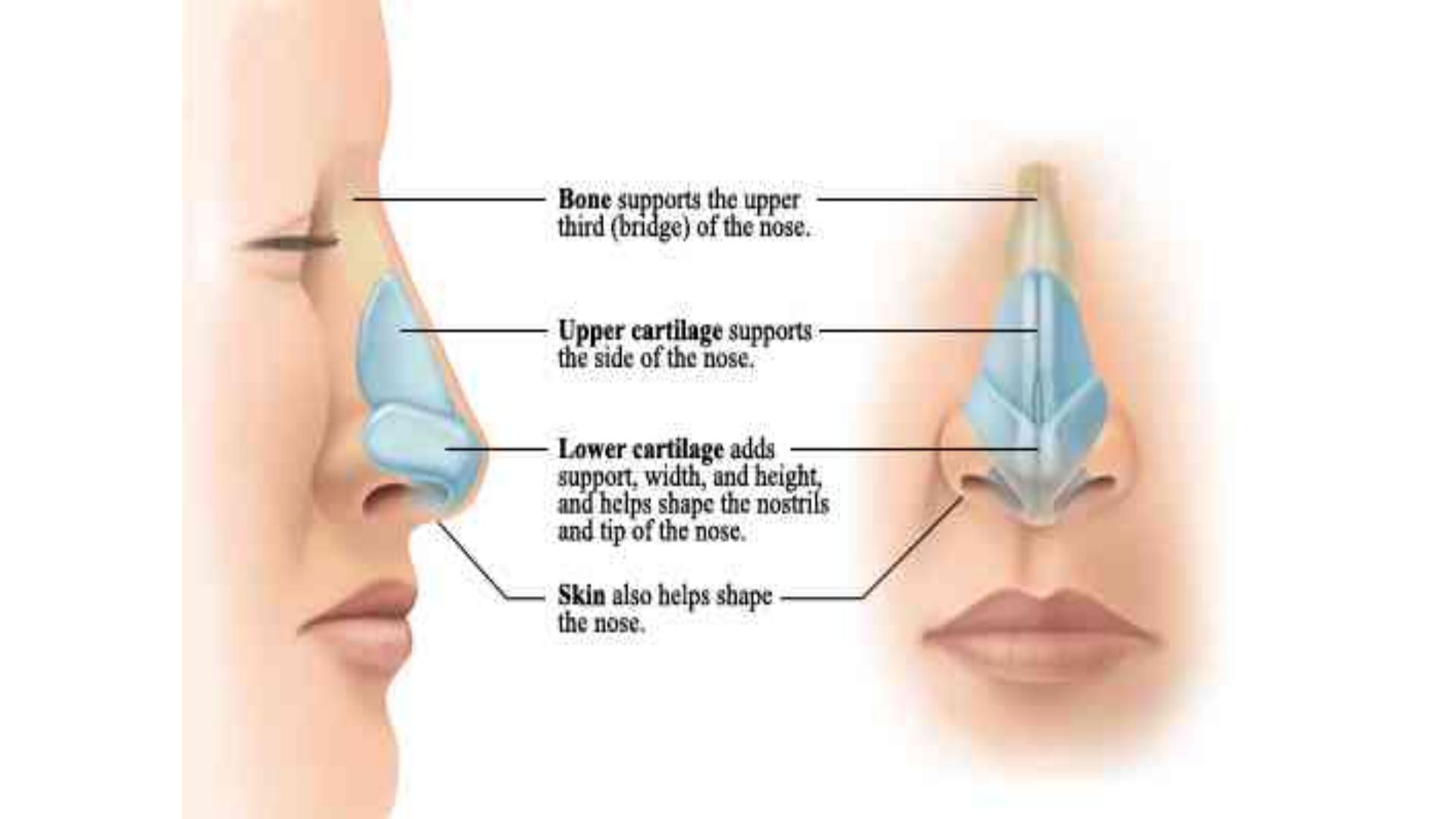
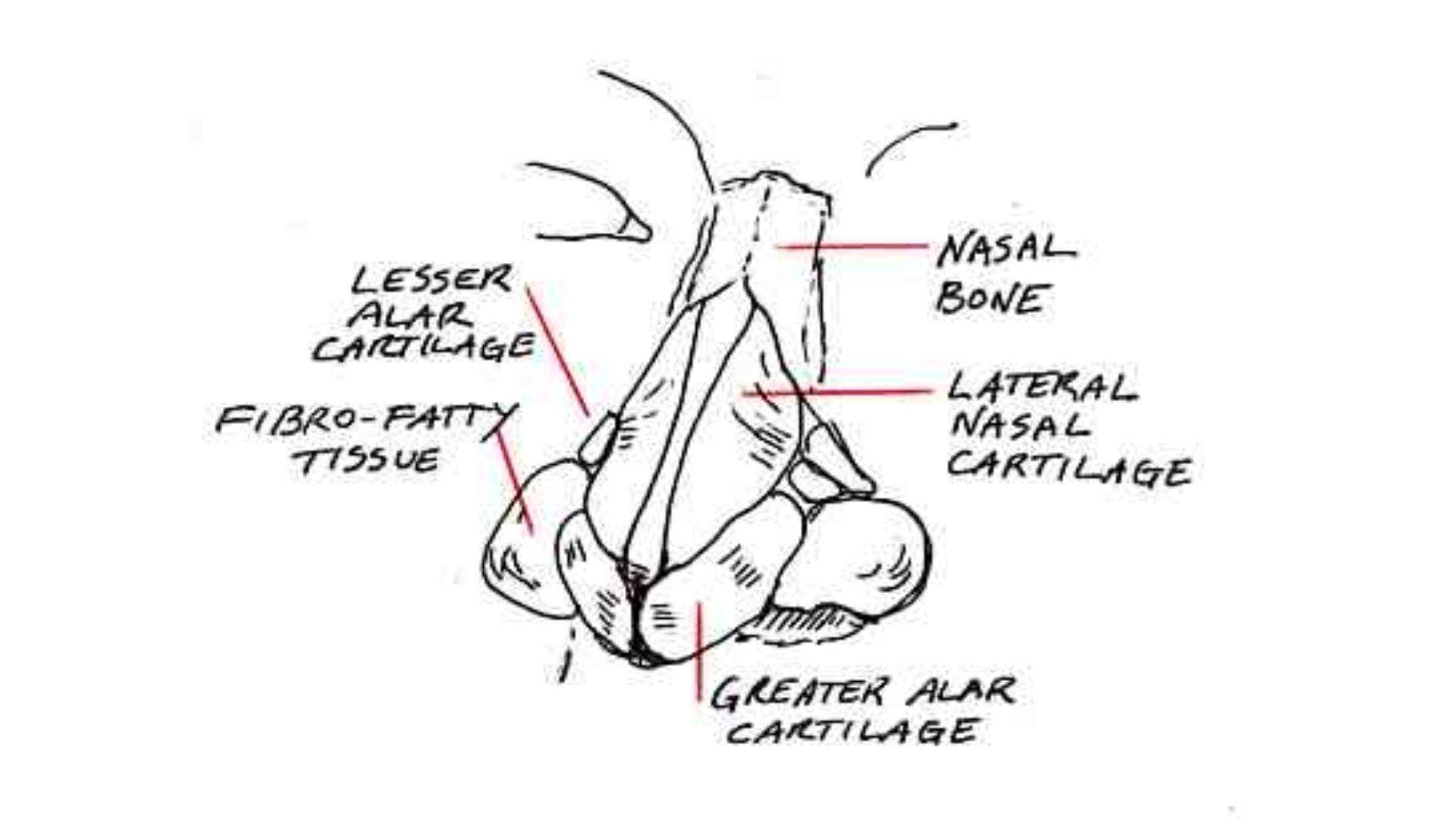
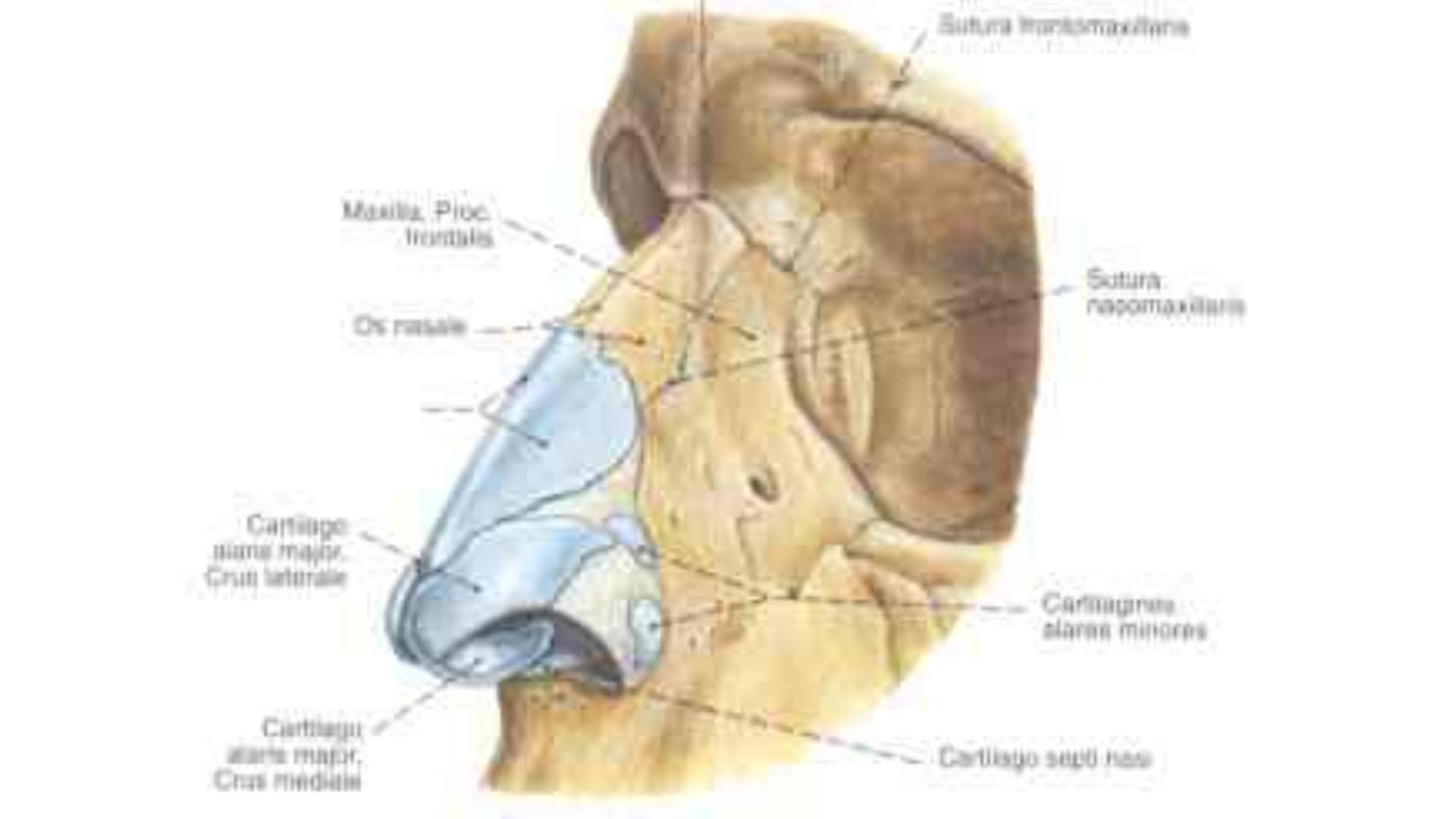
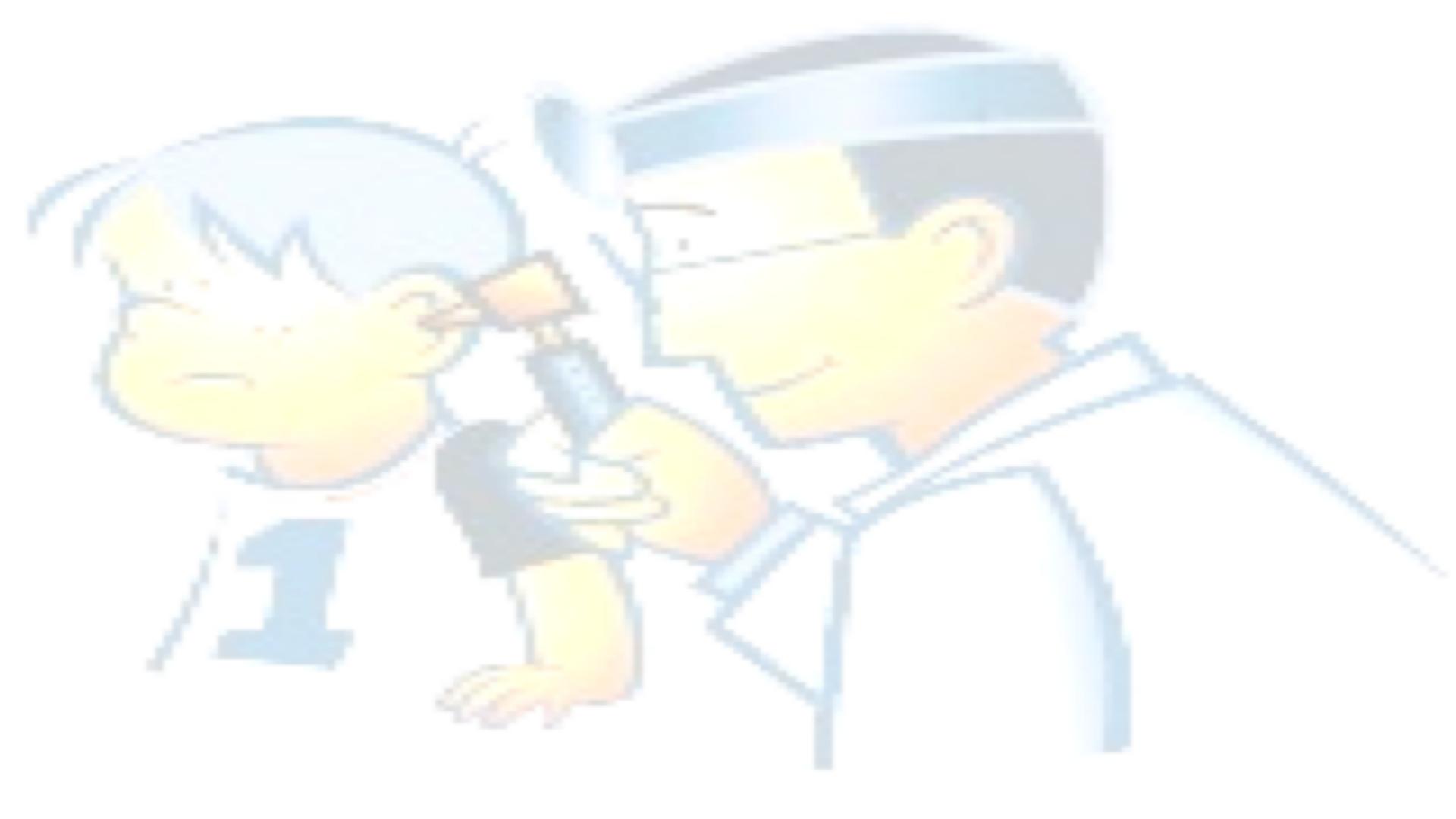
Vestibule
is part of the nasal cavity just within
the the external nose,the vestibular skin contain
hair follicles,hair and sebecious glands

Nasal cavity
Divided into two cavities by the nasal septum
It`s ant.openning called ant naris while it`s post. Opening called post.naris
which open into nasopharynx
Nasal septum
Formed by
Cartilaginous part anteriorly by quadrilateral cartilage
Boney part posteriorly which formed by
Perpendicular plate of ethmoid
Vomer
Nasal crest of maxilla
Nasal crest of palatine bone
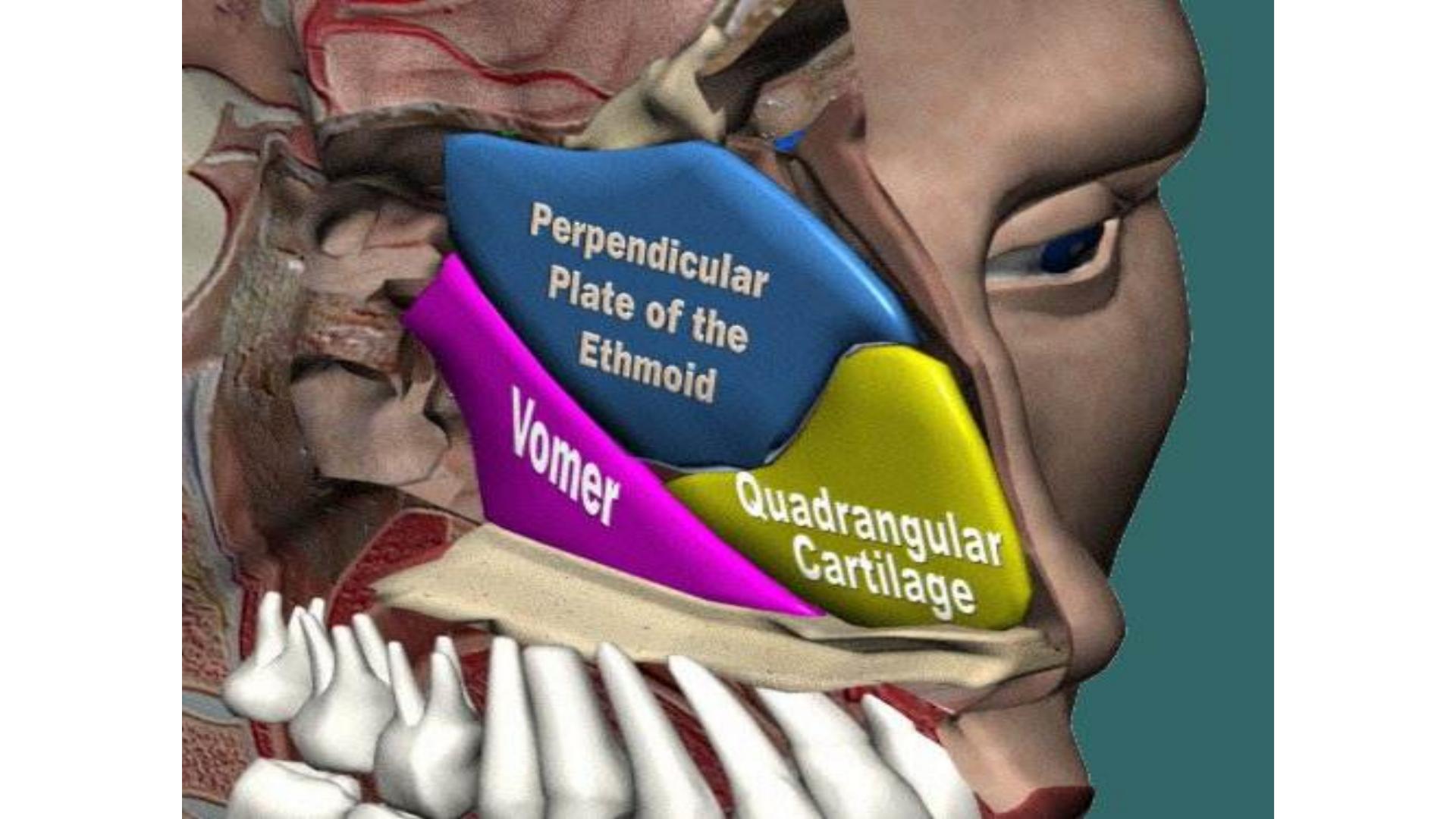

Lateral nasal wall
Within the nasal cavity there are three turbinates (superior,middle and
inferior)
Superior and middle turbinate is part of ethmoid bone
Inferior turbinate is a separate bone The air space beneath
each turbinate is known as
the meatus of the corresponding turbinate.
i.e each meatus named after the turbinate above it
There are various ducts and sinuses open in the meati
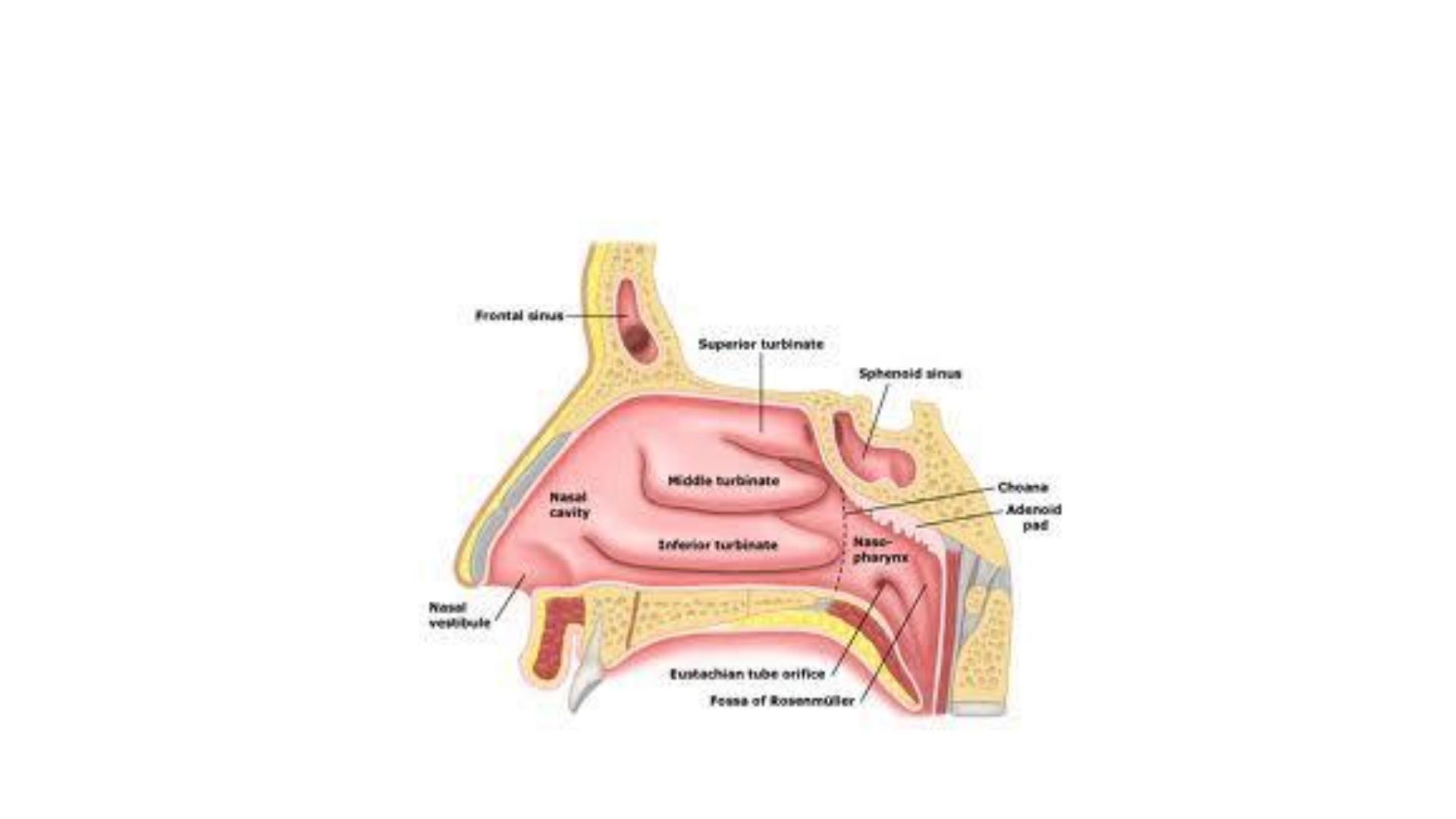
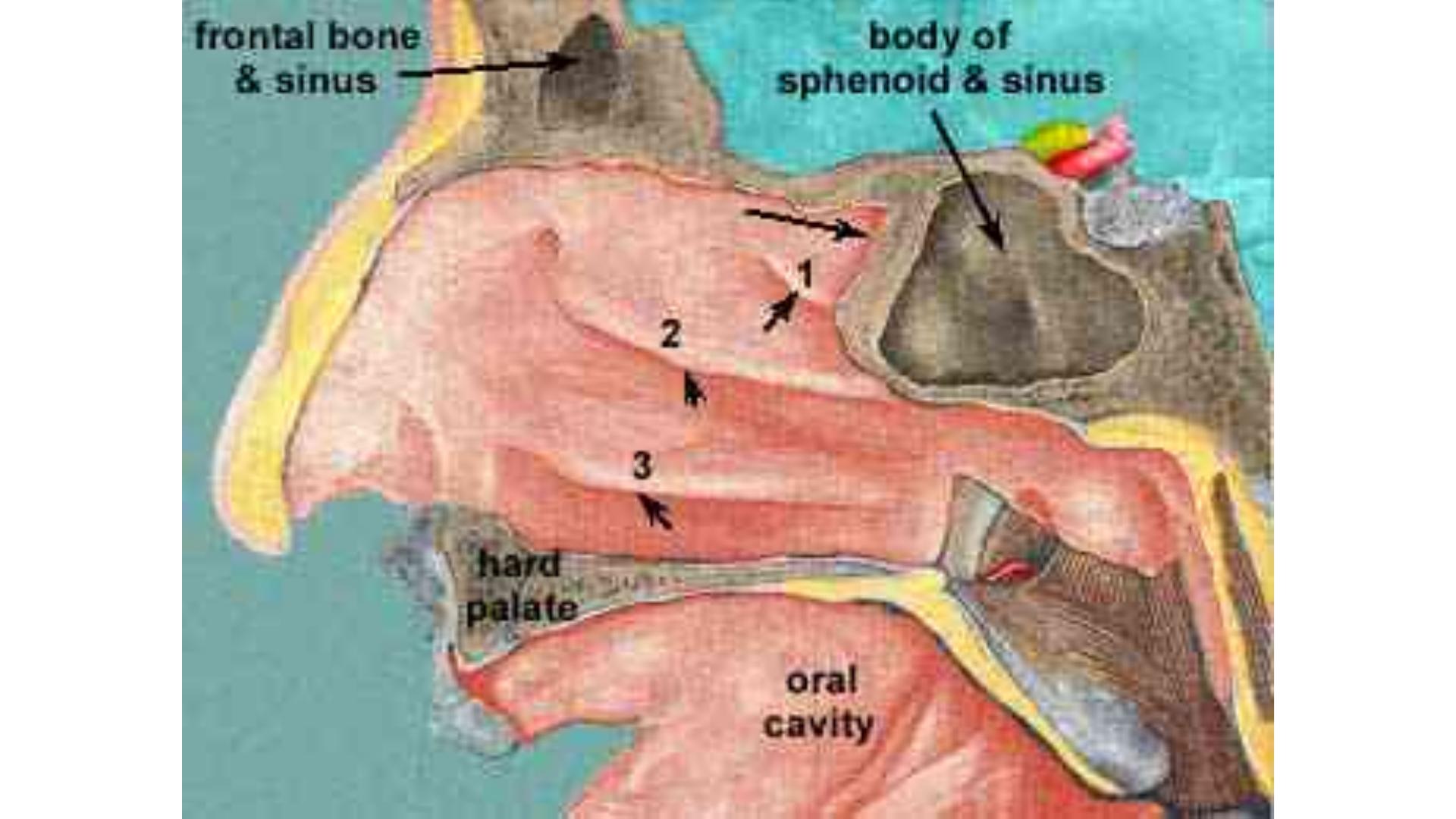
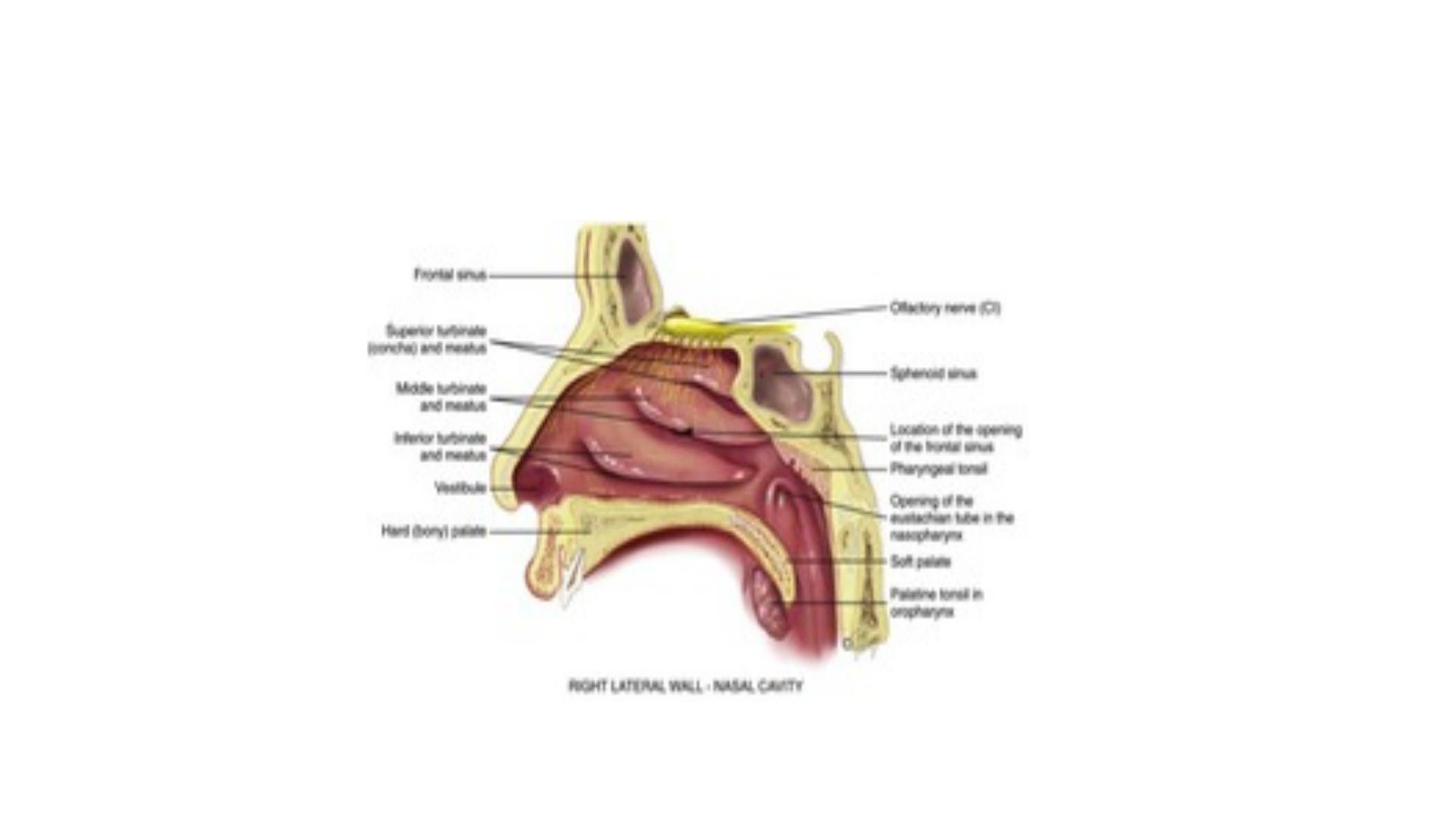
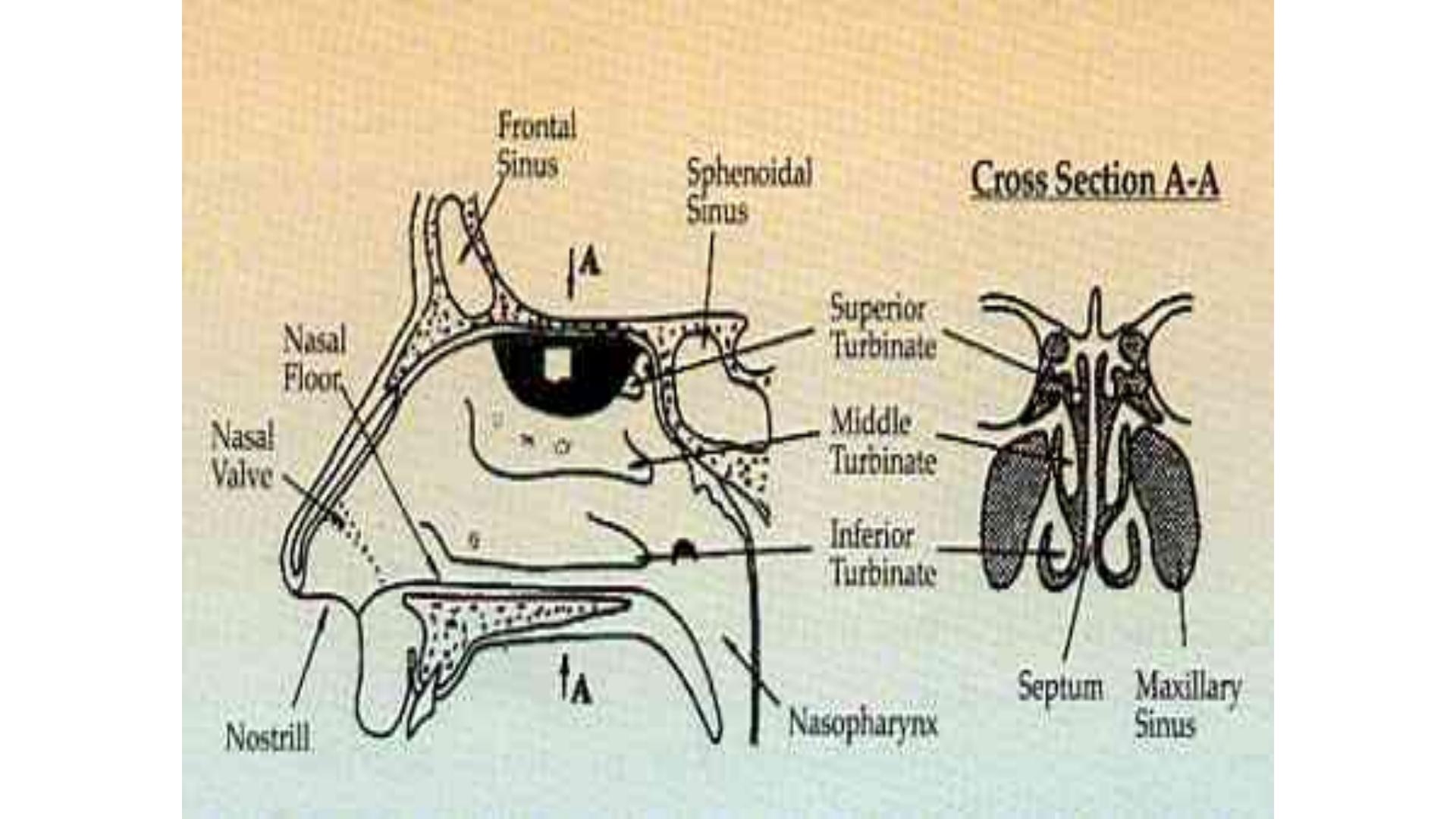

There are various ducts and sinuses open in the meati
Each turbinate is a cigar-shaed ridges or swellings are
attached to the lateral nasal wall ,each is made of
bone,superior and middle is part of ethmoid bone while
inferior turbinate is a separated bone,
All turbinates are coveres with vascular mucopreriostium
and ciliated columnar epithelium.
The space under each turbinate is called a meatus i.e inferior
meatus lies under the inferior turbinate etc…

• The vascular inferior turbinate contains the second errectile
tissue in the body i.e it has the ability to swell and shrink
under autonomic nervous system control.
• The function of the inferior turbinate is to control the
passage of the air through the nose via the nasal cycle,the
inferior turbinate is one side enlarged,as and as aresult the
air flow through that nostril is restricted.

• This reduse the drying effect of airflow and allows for
rejuvenation of the nasal lining and cilliary function.
• After approximately 4 hours,the turbinate on the other side
swells and on previously rested side the turbinate shrinks.
• This nasal cycle is a normal physiological mechanism that is
present to some extent in all of us but noticed only by some
people.

• Nasal epithelium is a pseudostratifi ed columnar ciliated mucous
• membrane continuous throughout the sinuses. The epithelium
contains
• goblet cells, which produce mucus, and columnar cells with
• mobile cilia projecting into the mucus, beating 12–15 times a second.
• The direction of ciliary beats is organized into well-defi ned
pathways,
• present at birth. These mucociliary pathways ensure drainage of the
• sinuses through their physiological ostium into the nasal cavity

Lecture 2
